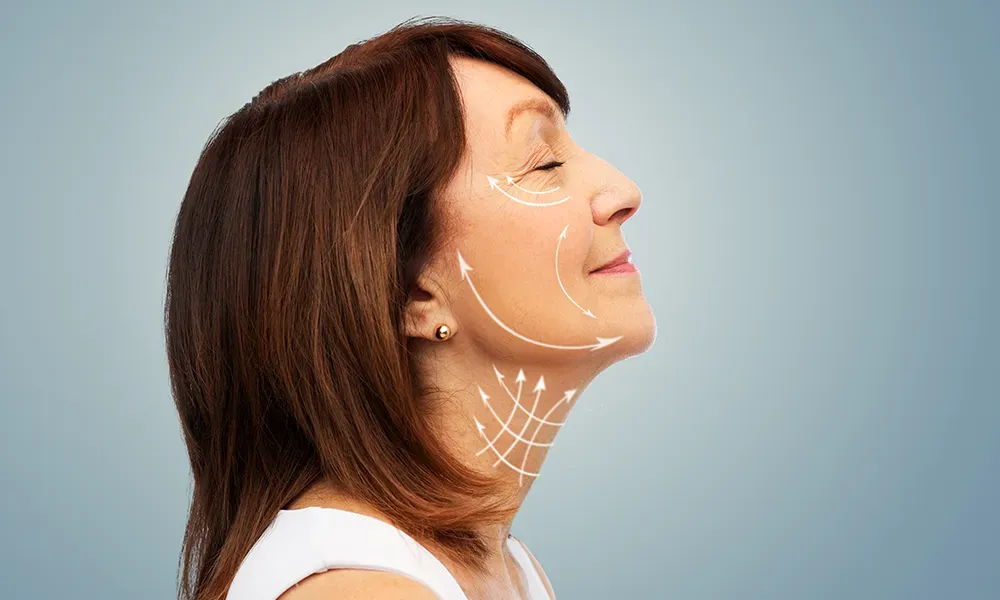As we age, the natural effects of gravity, sun exposure, and the loss of collagen and elastin can cause the skin to sag and wrinkle. For many, this leads to a desire to rejuvenate the face and restore a youthful appearance. Two popular options for facial rejuvenation are PDO threads and traditional facelifts. Both treatments have their pros and cons, and the right choice depends on your individual needs, preferences, and goals.
In this article, we will explore the differences between PDO threads and traditional facelifts, helping you understand which treatment is best suited for you.
What Are PDO Threads?
PDO (Polydioxanone) threads are a non-surgical cosmetic treatment used to lift and tighten sagging skin. These threads are made from a biodegradable material that is commonly used in medical sutures. PDO thread lifting involves inserting these threads into the skin using a fine needle. Once placed under the skin, the threads stimulate collagen production and provide a subtle lifting effect.
This technique is often used to address sagging in areas such as the jawline, cheeks, neck, and forehead. It’s a popular choice for those looking for a more subtle, temporary solution to aging without undergoing major surgery.
How PDO Threads Work
PDO threads work by being inserted into the skin in a way that supports and lifts the tissues. The threads are strategically placed to stimulate the body’s natural healing response, encouraging the production of collagen. This process leads to tighter, firmer skin over time, which enhances the overall appearance.
Over the course of several months, the PDO threads dissolve naturally in the body, leaving behind a more youthful, lifted appearance. The results are gradual and can last anywhere from 6 to 18 months, depending on the individual’s skin type and the area treated.
Benefits of PDO Threads
- Non-invasive: PDO thread lifts don’t require incisions or general anesthesia, making it a less invasive option compared to traditional facelifts.
- Minimal downtime: Most people can return to their normal activities within a day or two after treatment.
- Quick results: You may notice an immediate improvement in the skin’s appearance, with further results developing over the following months.
- Natural-looking: PDO threads create a subtle lift without the dramatic changes associated with surgery, resulting in a more natural, refreshed look.
- Collagen stimulation: PDO threads encourage collagen production, which improves skin texture and elasticity in the long run.
What Is a Traditional Facelift?
A traditional facelift, or rhytidectomy, is a surgical procedure designed to lift and tighten sagging facial skin, reduce wrinkles, and restore a more youthful contour. It involves making incisions along the hairline and around the ears, then pulling the skin taut to remove excess fat and skin. The underlying muscles and connective tissue may also be repositioned for a more dramatic and long-lasting result.
A facelift is typically recommended for individuals with more significant signs of aging, such as deep wrinkles, sagging skin, and loss of facial volume.
How a Traditional Facelift Works
During a traditional facelift, the surgeon will make incisions along discreet areas of the face to minimize scarring. The skin is then lifted, and any excess tissue is removed. The underlying muscle and connective tissue are repositioned to restore a youthful appearance. After the procedure, the skin is tightened and sutured in place, with the goal of providing a smoother, firmer look.
The results of a facelift are immediate and can last for many years, often 10 to 15 years or more, depending on the individual’s age and skin condition.

Benefits of a Traditional Facelift
- Long-lasting results: A facelift provides dramatic, long-term results compared to PDO threads.
- Suitable for significant aging: A facelift is ideal for individuals who have more pronounced sagging, deep wrinkles, or excess skin.
- Comprehensive results: A traditional facelift addresses not only the skin but also the deeper layers of tissue, providing a more dramatic transformation.
- Permanent results: While the aging process will continue, the effects of a facelift are permanent, unlike PDO threads, which may need to be repeated over time.
Which Option Is Right for You?
Choosing between PDO threads and a traditional facelift depends on several factors, including the severity of your aging signs, your aesthetic goals, budget, and recovery preferences.
- PDO Threads: If you’re looking for a non-invasive, less expensive option to address mild to moderate skin laxity and wrinkles, PDO threads may be a great choice. They are ideal for people who want a subtle lift without the downtime and commitment of surgery. PDO threads are also a good option for younger individuals who are beginning to see signs of aging and want to prevent further sagging.
- Traditional Facelift: If you have more significant signs of aging, such as deep wrinkles, extensive sagging, or excess skin, a traditional facelift may be the better option. A facelift provides long-lasting, dramatic results and is more suitable for individuals with advanced aging who want a comprehensive facial rejuvenation.
Considerations Before Choosing a Treatment
- Age: While both PDO threads and facelifts can benefit individuals of various ages, PDO threads are typically more suitable for those in their 30s or 40s, while facelifts are generally recommended for individuals over 50.
- Budget: PDO thread lifts are often less expensive than a traditional facelift, making them a good option for people with budget constraints.
- Recovery: PDO threads require minimal recovery time, making them ideal for those with busy schedules. A traditional facelift, however, involves more downtime and a longer recovery period.
Recovery Time and Results
- PDO Threads: Recovery time is minimal, with most people returning to work within a day or two. Swelling and bruising may occur but typically subside within a week. Full results take a few months to appear as collagen production is stimulated.
- Traditional Facelift: Recovery can take weeks to months, with the initial swelling and bruising improving after 1 to 2 weeks. You may need to take time off work and limit physical activity during the recovery period. Full results become evident after several months.
Cost of PDO Threads vs Traditional Facelift
The cost of PDO threads tends to be significantly less than a traditional facelift. PDO threads can cost anywhere from $1,500 to $5,000 depending on the area being treated, while a facelift typically ranges from $7,000 to $15,000 or more, depending on the complexity of the procedure.
Conclusion
Both PDO threads and traditional facelifts offer effective ways to rejuvenate the face, but they suit different needs. PDO threads are ideal for those seeking a non-surgical option with minimal downtime, while a traditional facelift offers more dramatic, long-lasting results for those with significant signs of aging. The right choice for you will depend on your desired outcome, budget, and willingness to undergo surgery. Always consult with a cosmetic clinic to determine the best treatment for your needs.






More Stories
Top 3 Tips to Remove Makeup the Right Way